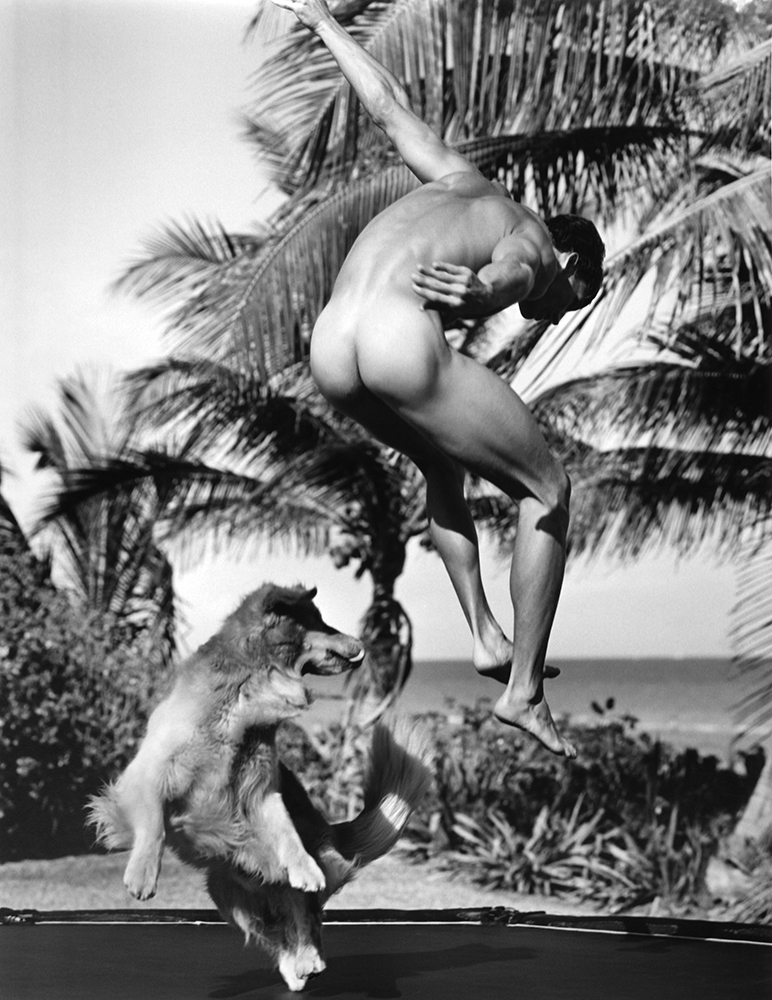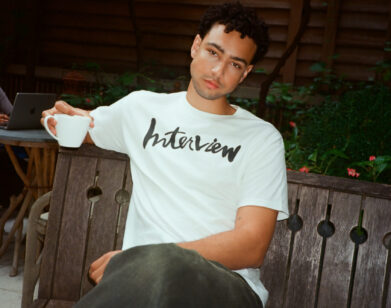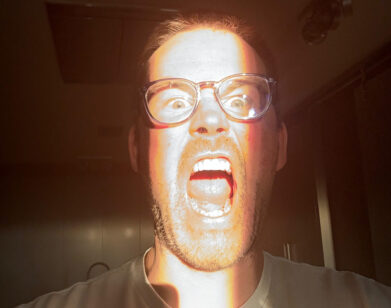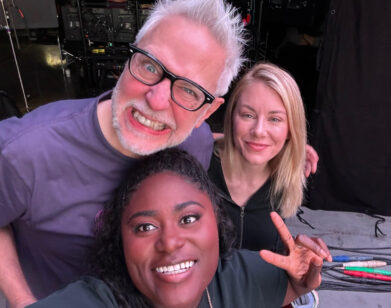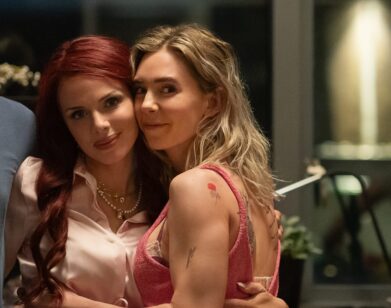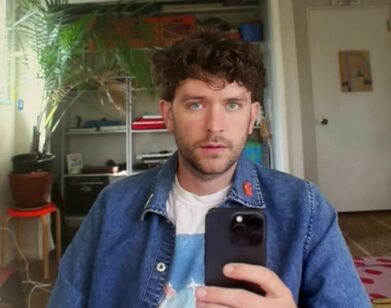Bruce Weber, Forever in Motion
Bruce Weber has a lived a life in images. The photographer and filmmaker has created some of the most indelible fashion imagery over the past four decades for Calvin Klein, Ralph Lauren, Vogue, Vanity Fair, and Interview with his trusty Pentax, all the while crafting a distinctly Weberian iconography of exuberant all-American beauty, marked by an embrace of youthful athleticism, rugged sexuality, and many a golden retriever.
But before all that, the Pennsylvania-born Weber studied film at NYU, and to earn extra cash, modeled for Richard Avedon, Saul Leiter, and Francesco Scavullo, where he met his future agent, producer, and wife, Nan Bush. At the urging of Avedon and Diane Arbus, Weber went on to train in photography with Lisette Model and never lost his instinct for making films.
Starting today, Film Forum will mount a retrospective of Weber’s feature films and shorts, as well as a selection of his commercials, music videos, and works in progress. Among the films featured are his debut documentary about Olympian boxer Andy Minsker, Broken Noses (1987); his multi-subject documentary Chop Suey (2001); his documentary about his dogs, A Letter to True (2004); and Weber’s Academy Award-nominated 1988 documentary, Let’s Get Lost, chronicling the life of troubled jazz trumpeter Chet Baker. The retrospective will also host Q&A with Weber following tonight’s screening. The “Bruce Weber Collection” DVD set will be released this December from Cinedigm.
Earlier this week, Interview visited Weber at his studio on Canal Street, close to the mouth of the Holland Tunnel. Wearing his signature navy blue bandana, the gracious and good-natured Weber spoke with us about finding subjects, standing up for your work, and how hiding behind a camera can open the door to opportunity.
COLLEEN KELSEY: After releasing films periodically throughout your career, how does it feel to see them all together at the Film Forum’s retrospective?
BRUCE WEBER: You know, it’s like having a couple kids and they’ve all graduated and left home and you welcome them back for the Christmas holidays. These films are definitely my children, my wife’s children—Nan, she’s a producer of these films. And the kind of thing that I’m really happy, and then also sad about, is that a lot of these people that are in these films really blossomed after we made them. I’m kind of sad that Chet’s not around to be here with me, to see how many people love his music. I remember in college people would say to me, “Why do you have that album Let’s Get Lost around? Who is that guy?” Nobody was really interested in going down to the Fillmore [East] and stuff like that. I always loved him since then, way, way back, loved his music.
KELSEY: I know you studied film before becoming a photographer full-time. How was it to transition from working with moving images to still images?
WEBER: I kind of mixed both up, in a way. My dad took photographs and shot films—not as a profession, but he just did and it was really a magical time, even though it was just on the weekends. It was really good for getting into photography. I had an exhibition years ago at the Whitney Biennial and I had one wall of my dad and the other wall was mine. I was so proud to see his pictures. In fact, his pictures really made mine look not so good. [laughs] But, it was great. I wish he had been alive to see it.
KELSEY: Were you into movies as a kid?
WEBER: Yeah. I lived for films. I was really obsessed about Elizabeth Taylor. You have to understand when I was growing up, I mean, there were wars going on, all kinds of things were happening. And in the headlines it was “Eddie leaves Debbie for Liz!” In the headlines! And so, for a kid to know all these kinds of things were going on all the time, or, “Elizabeth escapes to Rome!” It was so crazy! Years later I became good friends with her, and I really loved the experience. I really miss her. We always talked about doing a film together about sex. She was really interested in trying to talk to people about having safe sex. She has an AIDS charity [AmFAR]. When you’re young, you think nothing can ever happen to you. We were going to ask all these different people, a lot of young actors and actresses that she liked, to come and talk about it. But then she got sick. So we never really did it, but then it was kind of too late because she was too frail.
KELSEY: One of the things that really strikes me about your films is they’re centered around such unique characters who are not only visually interesting, but who have an interesting life, who are going out there and living and not necessarily following any of society’s rules. What attracts you to a subject? Making a documentary you have to have an intimate rapport with them.
WEBER: Totally. I think that it’s part luck, it’s part knowing what your real feelings are about somebody, and not being embarrassed. One time I said to Chet, “Chet, I’m really lucky I love you but I’m not in love with you.” There’s a line in the film that says there’s a thin line between love and fascination. And I think that all documentaries come to that. Peter in Chop Suey was this idealized Midwestern athlete. But what was really beautiful, and is still, about Peter, is he doesn’t have a mean bone in his body. So, he’s going to be like that to me when he’s 90 years old. I’ll probably be about 130 then, but…[laughs] Even with my dog True, I knew he was going to be able to do a film because he loved being in front of the camera. And his love for me was so devotional. He would just do anything in the world for me. And I wanted to have a record of that. I think sometimes you make these films almost for yourself because you’ve got to stand up for them all the time. You go and you take pictures, too, and you’re always standing up for them. You think, “Aren’t people reading too much into it? It’s so innocent.” People always do that if they see some girl with her top off or some guy partially nude, or fully nude, or whatever. And I think, “I can’t believe they read that into it. That’s so weird.” And they think, “Oh, do you think that girl or guy is really sexy?” And I go, “I never thought about it like that.” You can’t go shoot a picture and think, “Oh, that’s going to be sexy.” That would be almost funny. It sounds like a Saturday Night Live skit.
KELSEY: Is there anyone now that you have been fascinated by that you would want to make a documentary about?
WEBER: Well, I used to want to make a documentary about a coach. I was really fascinated by a coach I got to photograph, Tom Landry, who was the coach for the Dallas Cowboys. I loved that here was this square guy, he married his high-school sweetheart, and he just loved football more than anything else in the world. He was just such a sweet guy. When I photographed him, I just adored him. I loved the way he looked and everything. I think that he would have been someone who was right for me, but I was very involved in my other films. I had a friend, C.Z. Guest, where I was making a film. And then she got sick and so it was hard for her to work on the film then because she wanted people not to know how sick she looks, because she felt they won’t ever ask her a question about her gardening, about her animals, about her life. Sometimes you pick people that you’re fascinated with and it doesn’t turn out. Other times you pick people that you’re fascinated with and it’s like, “Whoa. Why did I do this?” I’ve been really, really lucky that I was able to live and breathe the people I’ve chosen.
KELSEY: Have you ever pursued working with someone and then you found out that they were not what you thought they were going to be?
WEBER: Oh, all the time, especially in photography. Sometimes you meet somebody, you think, “I want to make a film about this person. That would be fun, even a short film, five minutes.” But then the more you start getting into it, the more you know you don’t want to do it. [Kelsey laughs] Because you have to give up so much, you know? I think all these films, for any filmmaker, whether it’s a feature or a documentary—labels aren’t important—I think you have to give up a lot of your inner life to do it. Everybody’s out taking a walk on a Sunday afternoon, it’s beautiful, and you’re not with your dogs, or your friends, or your loved ones. You’re in an editing room and it’s dark. You’ve got to want it really badly. I always found it great, at least for myself, in books and reading. I’ve tried to show that a little bit, that fantasy world that you get from reading. And you have this vision image, you know. I was thinking about all the horse books I have and the illustrations. They’re so gorgeous. I think about those drawings, those pictures, and the way those books just really made you feel that “Wow!” as a kid. I kind of like the fantasy world. The more I’m talking about it, the more I realize I wouldn’t even have this life, I wouldn’t be sitting here, if I didn’t have a camera or I wasn’t making a film. I’m basically really shy, and I don’t know if I have such an engaging personality, and without my camera somebody is going to say, “Yeah, I’ll hang out for a while.” I think that I’ve been really lucky I’ve had a camera. It’s definitely my passport—that’s for sure—to places beyond.
KELSEY: Do you find that the anonymity of having a camera opens things up?
WEBER: Yeah. It really opens the door. You can go up to anybody. You go into a new town, take pictures, you meet the waitress and she tells you about something. “Oh, what do you doing with these cameras?” “I’m taking some pictures.” “Oh, great. You should go down to that place; there’s some really cool cars.” You go out, you go to a car place and there’s a mechanic who’s really great for pictures. Then he takes you and introduces you to his wife and she’s really beautiful, they have a great kid; I even photograph their baby. It just goes on.
KELSEY: Has making movies has influenced or affected your approach to photography?
WEBER: I really use each of them as a school for the other, within itself too. By that I mean that because I photograph at the beginning of my films and all the time through, I kind of felt that my pictures got freer because you couldn’t control it so much. You could have somebody sit here but when they move around they might not look the way that they did when they sat for you. So, it’s exciting to me. I want to make films like a photographer. I was always proud that I was a photographer. People, at first, when I first did my first film, Broken Noses, they were really tough on me because I did fashion photographs. I stood up to it; I was really proud of it. I laugh now because all the actors and actresses, they all wanted to be fashion models, which is really weird. I laugh at it. And sometimes they’d come up to me and they’d say, “Oh, what designers should I wear?” I can’t believe you’re asking me these questions!
KELSEY: You’ve been shooting fashion photographs since the ‘70s. What keeps you engaged?
WEBER: They give me something different. On a lot of my shootings now we also make films, because you have to do that now for magazines. We made a lot of shorts recently. I think this year we made, like, 40 shorts. I really enjoyed it. I like that I have more time to take my pictures. And now—years ago when I used to have a job, I used to go away for a week to do ten pages. Now you go away for a day and a half to do ten pages. So, it’s kind of crazy, but, I can keep up with it. I’m proud that I can do it.
KELSEY: Do you find ever feel the push to shoot digital? Would you ever do a film in digital?
WEBER: A film? Well, a lot of my early films are in film. I’m working on a Robert Mitchum film right now and it’s in film because I started it in film. But some of my other films are done in both film and digital with the right camera. And that’s been great. I don’t think it’s so much about what I’m using. When I take photographs I still use film. My assistants, I buy them old cameras to take photographs with film. To do both—I think that’s the healthiest. I’m just from a different time.
BRUCE WEBER WILL RUN AT FILM FORUM, 209 WEST HOUSTON STREET, NEW YORK, FROM TODAY, NOVEMBER 15 TO NOVEMBER 21.

